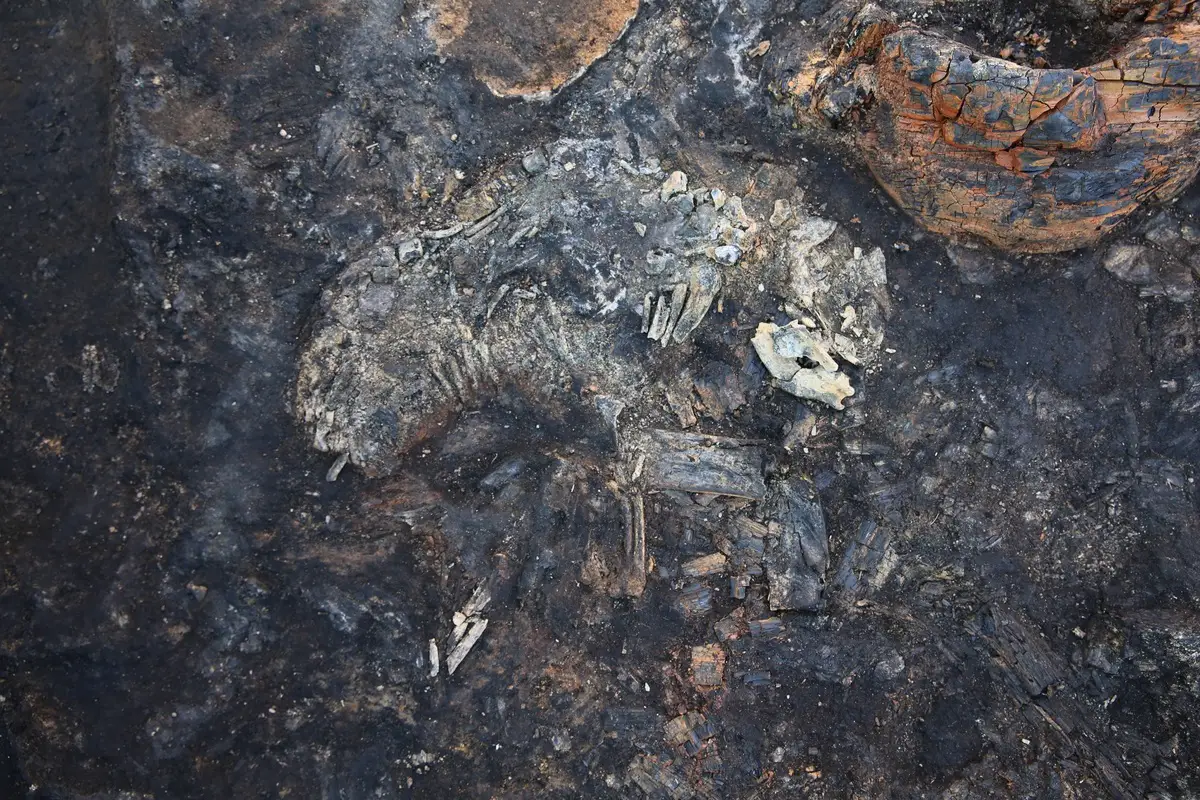Archaeologists have found evidence of dog sacrifices near the Wolseong Palace, a royal palace of Silla in what is now Gyeongju, South Korea.
Silla was one of the Three Kingdoms of Korea or Samhan that existed from 57 BC to AD 935. Gyeongju, known as Seorabeol during the Silla Dynasty was the kingdom’s capital, where a fortified palace complex was constructed in the shape of a crescent moon (also known as a Banwolseong).
Previous excavations have uncovered traces of human and animal remains buried at the palace’s main entrance, likely as part of a sacrificial ritual during its construction.
At a recent press event, the Korea Heritage Service announced the discovery of a circular structure with dog bones and various artefacts on the outskirts of an ancient village southwest of the palace.
According to Kim Heon-seok, a researcher specialising in zooarchaeology at the National Research Institute of Cultural Heritage in Gyeongju, the remains of two dogs were sacrificially placed on the left and right sides of the structure symmetrically.

A closer examination of the remains has revealed that both dogs appear to have been crushed to death with considerable force, which were found with offerings of a knife, a wooden comb, shark teeth, and a crystal necklace placed in a wooden box.
An analysis of the excavated pottery and various items confirmed that the structure and dog sacrifices date from around the 3rd century BC. Based on the condition of the excavated relics and surrounding evidence, archaeologists suggest that the area was burned following the ritual.
During the 3rd century BC, the region was part of Saro-guk, a statelet within the 12-member confederacy of clans known as Jinhan. According to Samguk Sagi, the Silla Kingdom was founded by Bak Hyeokgeose in 57 BC, who united the clans of Jinhan under his rule.
Lee Jong-hoon, director of historical relics policy at the National Heritage Administration, said: “We have reached a point where we can understand Silla historically and academically. It is very meaningful in that it has revealed a new side of it.”
Header Image Credit : Korea Heritage Service
Sources : Korea Heritage Service





